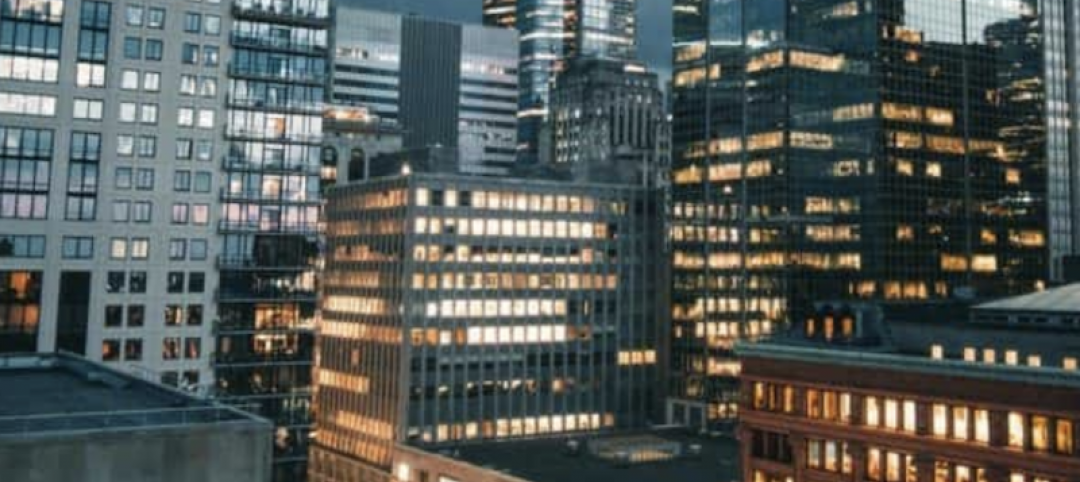We are officially into spring after enduring the wettest winter in Seattle’s recorded history. The long-awaited sunshine gets us outside and looking skyward – often at the flock of development cranes that span the horizon.
Seattle’s real estate has been booming for years, and is one of many indicators of the city’s macro-scale growth. A 2016 Metro Monitor report ranking economic development in the nation’s top 100 metropolitan areas scores Seattle 16th for growth and 12th for prosperity. What drives this growth? And will the growth dampen Seattle’s historic edge in sustainable development and green leadership?
Tech boom fuels construction boom
The tech sector dominates in the Puget Sound with Oracle, Alibaba, Dropbox, HP, Expedia, Tableau, Zillow, Google, Facebook, Amazon, Microsoft, and Adobe calling the Puget Sound home. Seattle tops Forbes’ list of Best Cities for Tech Jobs boasting 12% job growth in the last two years.
Expedia has revealed preliminary plans for its new headquarters in Seattle, and Google has announced a large expansion in South Lake Union, and we know that their sustainability mission is strong. To top it off (pun intended) Crescent Heights 4/C, a massive skyscraper, is being proposed in downtown Seattle and would be the tallest on the West coast.
Can sustainable building keep up?
At the start of the green building movement, CEO Tom Paladino helped found the City of Seattle Sustainable Building Task Force, a regional initiative that led to the adoption of LEED by the City through the Sustainable Building Policy, the first city in the country to do so. These efforts set Seattle on the fast track to become one of the most sustainable-minded cities in the United States. Seattle was recently number 8 in the top 10 list of LEED certified project space in the country.
Today, developments such as the Bullitt Center have pushed the boundary for high performance office buildings beyond LEED. Now the City of Seattle is creating a Living Building Pilot program, which incentivizes developers to follow ambitious deep green building requirements. And Dina Belon recently shared the City’s new energy efficiency policy changes, which improve an already stringent requirement and create full transparency of energy use in commercial buildings.
And yet Seattle is not the top dog in all sustainability categories. The city’s public transit system doesn’t even compete with smaller cities like Denver and Portland, much less compare to larger urban cities like Chicago, San Francisco, and New York that will soon be Seattle’s peers. The city boasts an impressive residential recycling and composting program but for a city with so many visitors and walkable neighborhoods it is nearly impossible to find a recycling or compost bin on the sidewalk.
So with huge projected growth and the challenges that come with it, will Seattle maintain its edge in sustainability?
Yes. Here’s how:
- The tech industry leads the way on data and transparency. Developers should leverage Seattle’s new energy performance transparency rules to drive demand for their energy-efficient buildings. A number of building tune up incentive programs are also offered for existing buildings from Seattle City Light and Puget Sound Energy.
- Strengthen the link between business value and sustainability. Startups are most likely to need capital and investors. They can grow their business and capture market share by reporting sustainability results to prove better and faster business growth through sustainability. Many investors are specifically targeting green companies.
- Use sustainability and wellness to attract the top talent. Sustainability goes hand-in-hand with the employee health, wellness, and engagement. Sustainable practices can dramatically drive employee attraction and retention.
- Embrace development of EcoDistricts and Living Buildings and into widespread adoption. Seattle’s Capitol Hill is an EcoDistrict with emerging tech brands like Knack, Sonos, FlyBuy, and Glympse calling it home.
- Piggy back on public transportation with innovative commuting options. While the city has long-term plans to expand public transportation, businesses can get creative and offer their own options. Expedia’s new headquarters is making access to the bike trail a key component of its campus plan, in line with a goal to decrease single-occupancy vehicle trips from 59 percent now to 49 percent by 2019. They are also offering incentives to employees to commute by other means, and plan to offer shuttle service from downtown Seattle or the Eastside.
Seattle is poised for success in creating a growing, healthy, equitable, and environmentally friendly city and to continue to set the example for other cities to follow. If tech firms are fueling our growth, they can also fuel our sustainability leadership.
About the Author: Nash Emrich AIA, LFA, LEED® AP BD+C, is a technical consultant in Paladino’s Seattle office.
More from Author
Paladino | Jan 10, 2022
The future of regenerative building is performance-based
Why measuring performance results is so critical, but also easier said than done.
Paladino | May 26, 2021
Injecting embodied carbon capability into the integrated design and construction process
Embodied carbon is defined as the carbon footprint of a material, and is expressed in metric tons of CO2e.
Paladino | May 12, 2021
Climate modeling for a resilient business and future
This post explores changes that developers and their teams need to make to their risk and resilience strategies by climate modeling for climate change.
Paladino | Apr 26, 2021
Building performance requirements are coming: Are you ready?
Building Performance Requirements are trending nationwide and are likely coming to a county near you.
Paladino | Feb 8, 2021
Six lessons learned from our first Fitwel Viral Response Module certification
The Fitwel Viral Response Module is one of several frameworks that real estate owners and operators can use to obtain third-party certification for their efforts ensuring their properties are ready for a safer and healthier return to work.
Paladino | Jan 14, 2021
Shift your energy to carbon
Now is the right and necessary time for the commercial real estate industry to shift its environmental strategy from just energy, a carbon contributor, to carbon itself.
Paladino | Nov 13, 2020
5 tips when designing for daylight
Daylight modeling is a tool to examine how daylight interacts with a building, and how that natural light behaves within interior spaces.
Paladino | Jul 16, 2020
COVID readiness: IWBI and USGBC seek to help businesses quantify risk
In an effort to address the risks of COVID-19 at the building scale, USGBC and IWBI have analyzed existing certification guidelines and drafted new, relevant content.
Paladino | Jun 5, 2020
3 strategies to improve the wellness of building systems and gain tenant trust
Three operational issues that must be prioritized for every building in order to achieve tenant trust are air quality/ventilation, relative humidity, and building commissioning.
















